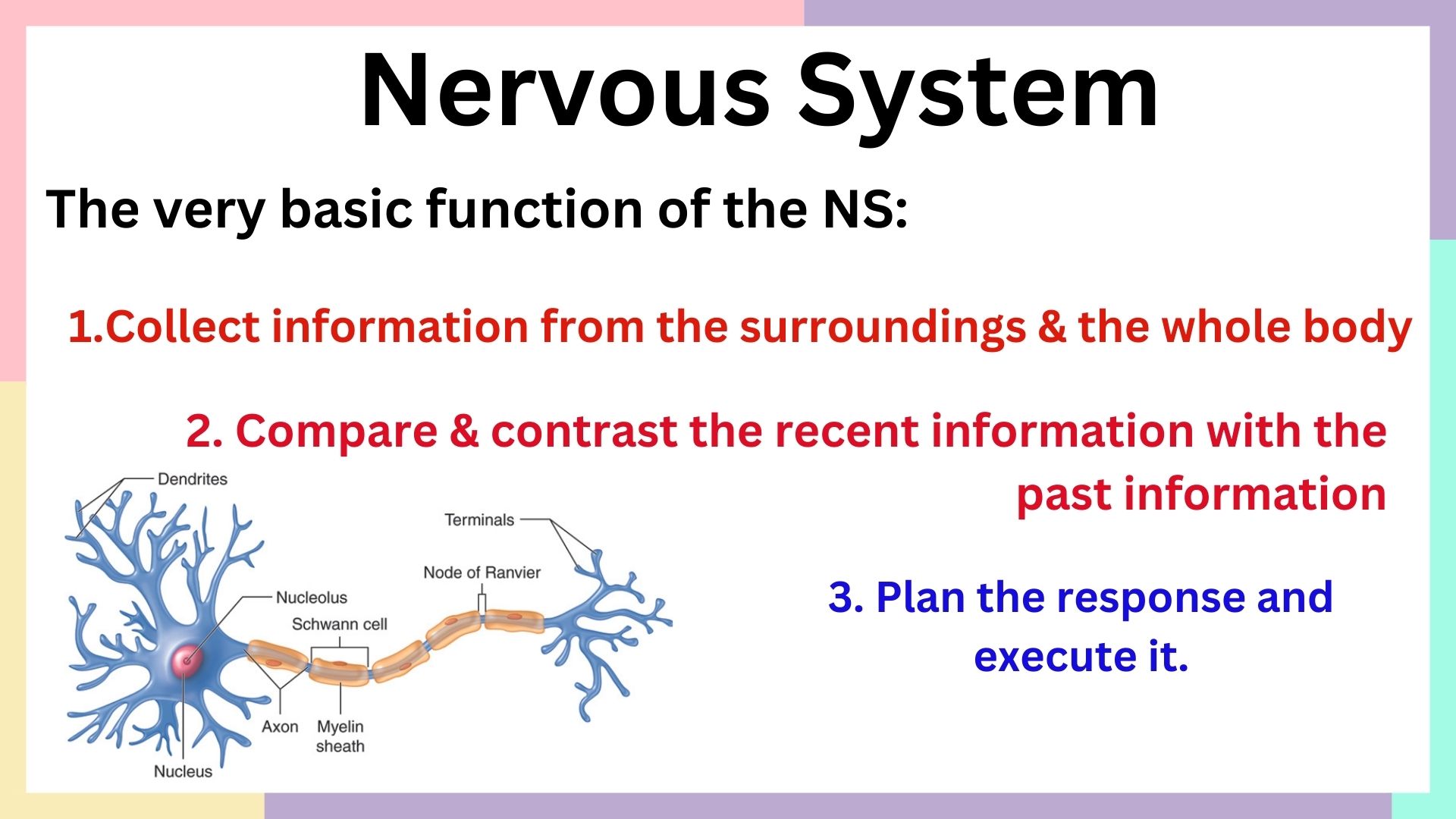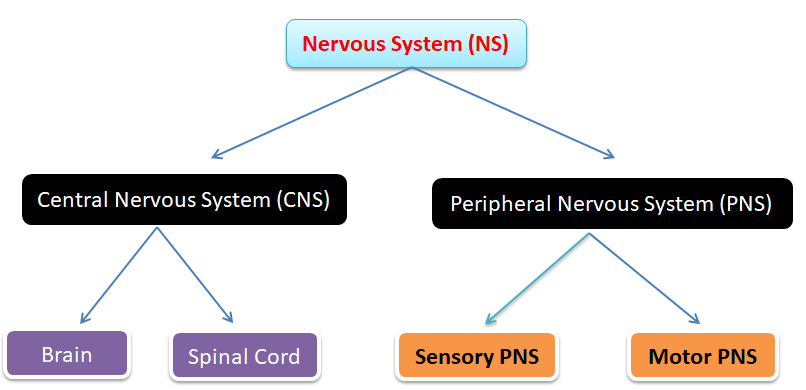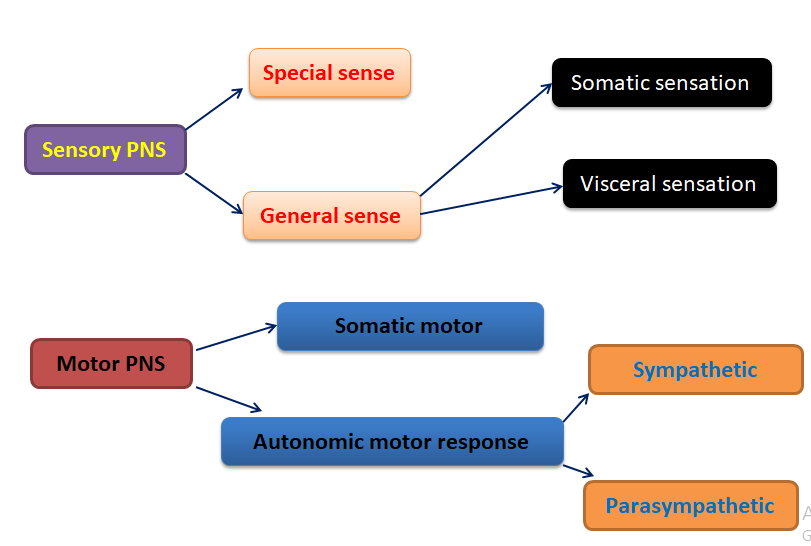Classifications of the Nervous System
First and foremost, the nervous system is classified into two:
- Central Nervous System (CNS), and
- Peripheral Nervous System (PNS)
Central Nervous System (CNS):
It is further classified into two:
- Brain, and
- Spinal Cord
Brain
It is again classified into three:
- Prosencephalon or Forebrain: It is further divided into the outer telencephalon (It is known as the cerebral hemisphere or cerebrum) and central diencephalon.
- Mesencephalon or Midbrain, and
- Rhombencephalon or Hindbrain: Consists of two
- Metencephalon (Pons and cerebellum)
- Myelencephalon (Medulla Oblongata)
Peripheral Nervous system (PNS):
It is divided into two:
- Sensory PNS, and
- Motor PNS
Sensory PNS
It is further divided into two:
Special sense: The part of the sensory PNS is involved in
generating some special sense from only a specific part of the body. E.g. Vision,
Olfaction, taste, hearing, equilibrium, and position.
General sense: The part of the sensory PNS that carries general sensation from all over the body. E.g. Pain, touch, temperature, position, vibration, etc. It is again divided into two: Somatic sensation and visceral sensation. Somatic sensation comes from the superficial part and the locomotor system of our body. The visceral sensations come from the deep part (e.g. dull pain or pain due to distension from the abdominal viscera).
Motor PNS:
The response takes place via the motor nervous system (according to the sensory information). This response is divided into two:
Somatic motor response (voluntary motor response): The final execution is done by the skeletal muscles under our voluntary control.
Autonomic motor response (involuntary motor response): The final execution is done by smooth and skeletal muscles. Hence, it’s not under our voluntary control. It is further divided into two:
- The sympathetic nervous system, and
- Parasympathetic nervous system
Another classification (structural classifications of the nervous system)
The nervous system, like before, is classified into two:
- The central nervous system, and
- Peripheral nervous system
CNS is divided into two structural components:
- Gray matter, and
- White matter
Gray matter:
It is a collection of the neuronal cell bodies
within the CNS. It is further divided into two
- Cortex: Gray matter at the surface of the brain. E.g. Cerebral cortex, cerebellar cortex
- Nucleus: Small pieces of gray matter within the deep part of the CNS surrounded by the white matter.
White matter:
It is the collection of axons inside the CNS.
It is further divided into three
- Tracts: The white matter that carries information up and down. E.g. ascending tract and descending tract
- Commissural fibers: White matter that connects between the right and left sides of the brain. E.g. Corpus callosum
- Association fibers: White matter that connects between the front and back parts of the brain.
Peripheral nervous system
It is composed of nerves. A nerve is nothing but a collection of axons outside of the CNS.
Additional:
Q: What are the peripheral nerves?
Peripheral nerves consist of
- 12 pairs of Cranial nerves and their ganglia
- 31 pairs of Spinal nerves and their ganglia
- 8 Cervical
- 12 Thoracic
- 5 Lumbar
- 5 Sacral
- 1 Coccygeal
Q: What are the types of cells in the nervous system?
- Neurons, and
- Neuroglial supporting cells
Q: Which part of the brain makes us conscious about a piece of information?
Q: What are the differences between the tract and the nerve?
Source:
- Lecture by Dr Najeeb
- Snell Clinical Neuroanatomy 7th Edition





.png)





0 Comments